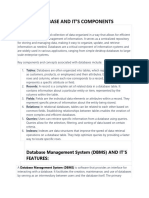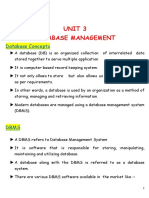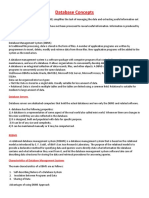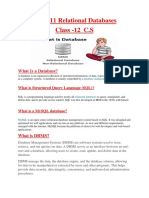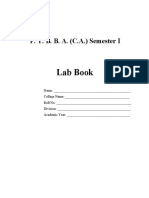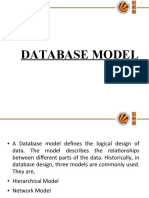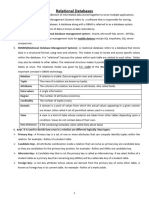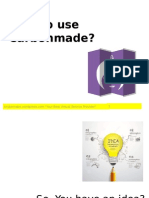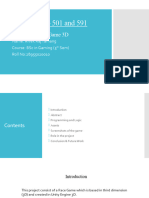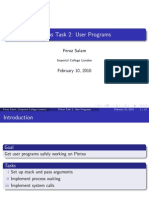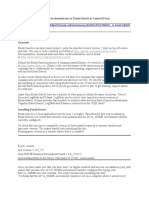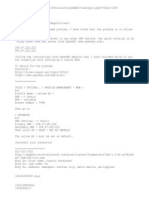0% found this document useful (0 votes)
253 views1 pageDBM and Dbms
Databases organize related information to support easy access and maintenance. Database management systems (DBMS) allow users to create, modify, and administer databases. Examples of DBMS include Microsoft SQL Server, Oracle, and MySQL. The relational data model organizes data into tables of rows and columns, with each row representing a unique record or tuple. Keys like primary keys and foreign keys enforce integrity and define relationships between tables.
Uploaded by
Ashwini Kumar ShuklaCopyright
© © All Rights Reserved
We take content rights seriously. If you suspect this is your content, claim it here.
Available Formats
Download as PDF, TXT or read online on Scribd
0% found this document useful (0 votes)
253 views1 pageDBM and Dbms
Databases organize related information to support easy access and maintenance. Database management systems (DBMS) allow users to create, modify, and administer databases. Examples of DBMS include Microsoft SQL Server, Oracle, and MySQL. The relational data model organizes data into tables of rows and columns, with each row representing a unique record or tuple. Keys like primary keys and foreign keys enforce integrity and define relationships between tables.
Uploaded by
Ashwini Kumar ShuklaCopyright
© © All Rights Reserved
We take content rights seriously. If you suspect this is your content, claim it here.
Available Formats
Download as PDF, TXT or read online on Scribd
/ 1







